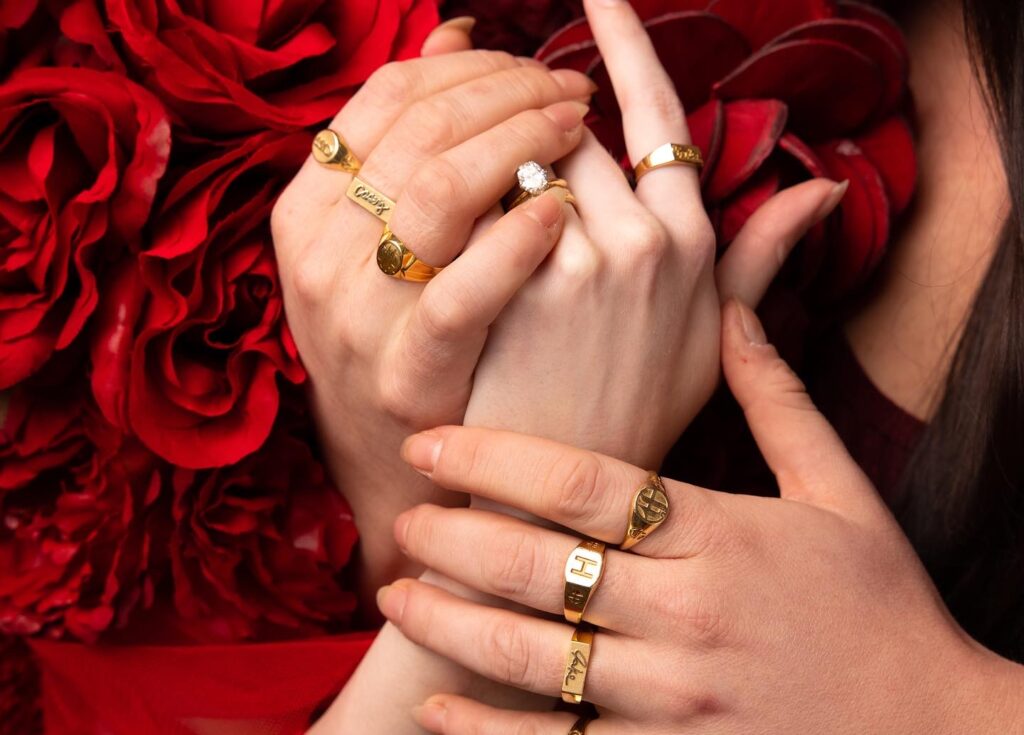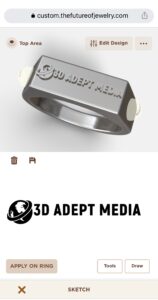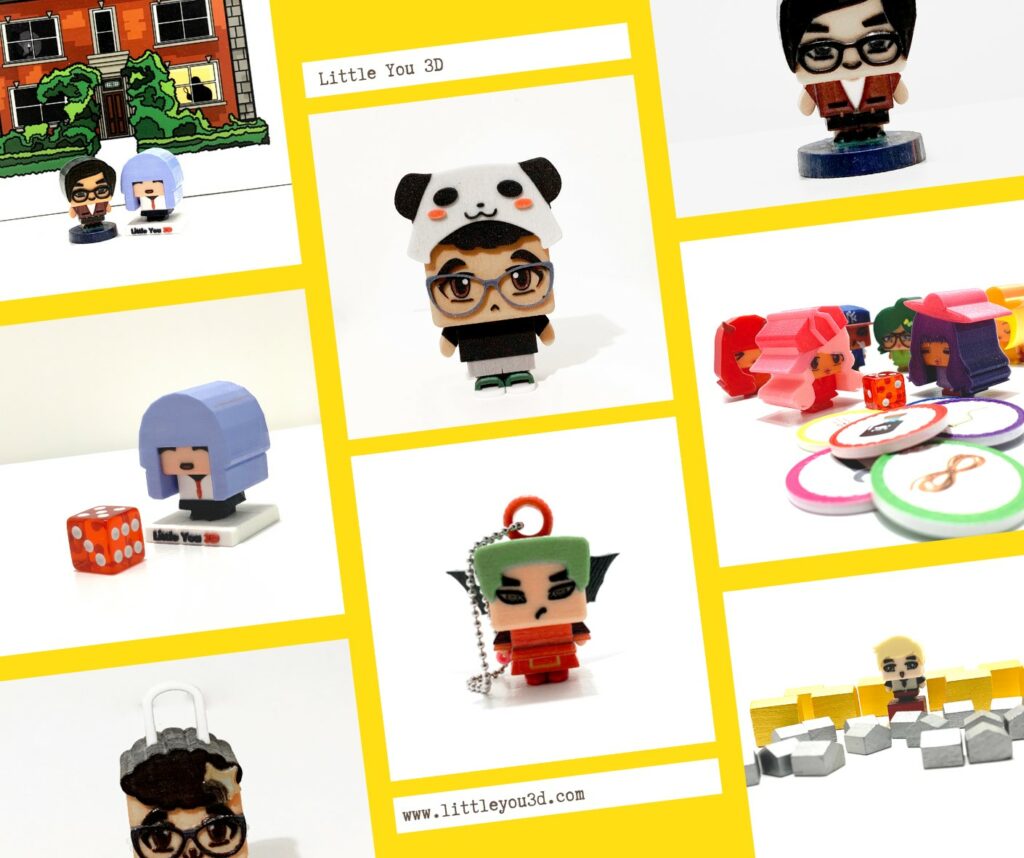It’s easy to see glasses, shoes and bikes as top applications in the consumer goods industry, but there are more…And what’s even more interesting is that sometimes, the founders do not necessarily always have an engineering background. This article sheds light on three businesses that rely on 3D printing to thrive:
1. Wyve, the 3D printed surf

Surfboard shapers have had cut boards from foam blanks for over half a century. Several companies are now seeking new alternatives for building boards that reduce environmental pollution. For French company WYVE, 3D printing has been salutary in their quest as the company relies on this process to design and produce surfboards that are more environmentally friendly. The journey started with Léo, Sylvain and Mylène, a group of friends – engineers by training and passionate about surf.
“By buying traditional surfboards, the surfing community inadvertently supports a process which uses petrochemical materials and generates toxic waste,” Wyve states. “Whether in the local small shaper’s warehouse or in the famous Californian factories, for the last 60 years, polyurethane and polyester have been polluting our air and oceans.”
A local manufacturing and distribution model
As engineers, digital modeling and optimization have been part of their training at an early stage, but starting with prototyping their first surfboards helps them to gain solid expertise in 3D printing. At the manufacturing level, the company leverages the FDM process to print its hexagonal cores from PLA, a bio-based recyclable plastic made from fermented corn starch. The manufacturing process follows five steps:
- Definition of the adequate surfboard outline thanks to the company’s data optimizing software, based on shapers’ knowledge, measurements, surfing habits and goals.
- Optimization of the honeycomb pattern, thanks to Computer Aided Design (CAD) to match high performance criteria.
- 3D printing of the core of your surfboard with bio-plastic. To limit its emissions profile, the company pledges to gather materials and manufacture boards on a local basis.
- Glassing of the hollow 3D-printed core with fiberglass and a 50 % bio-based resin (ecoboard gold label), with a final hot coat to make it shine.
- Carboard eco-packaging for a safe and eco-responsible transport.
So far, Wyve is surfing well on the road of success as it recently secured € 1.1 million. With this funding round, the team will continue R&D to produce high-performance and eco-designed boards in line with the professionalization and democratization of the practice; grow their local manufacturing micro-factory by combining the best of craftsmanship and technology; accelerate their commercial development and grow their team.
2. THEFUTUREOFJEWELRY (TFOJ)
 “Life takes us to unexpected places sometimes. The future is never set in stone, remember that”. These words from the writer Erin Morgenstern could apply to so many routes in anyone’s life, but today I feel that they really embody the creation journey of TFOJ. We first heard about sisters Janine and Casey Melvin in 2018 as they were introducing a custom 3D printed jewelry line and BEZEL, an ecommerce mobile application – when in fact, they had been training to become attorneys.
“Life takes us to unexpected places sometimes. The future is never set in stone, remember that”. These words from the writer Erin Morgenstern could apply to so many routes in anyone’s life, but today I feel that they really embody the creation journey of TFOJ. We first heard about sisters Janine and Casey Melvin in 2018 as they were introducing a custom 3D printed jewelry line and BEZEL, an ecommerce mobile application – when in fact, they had been training to become attorneys.
Casey Melvin on the right and Janine. (D’autres images mettant en valeur les bagues sont disponibles sur Google drive).
“We never had any plans to become entrepreneurs or start our own business”, Casey Melvin told 3D ADEPT Media. “In 2016, my sister and I both had just finished up our first year of law school in Ohio and because we had worked in the law for a few years before we entered law school, we wanted to take advantage of that summer as our last opportunity before the real world hits and you have to start studying for the bar exam to become a certified attorney. And you need to start lining up a job for once you become accredited.
So this first summer, we decided we wanted to study abroad. So we both applied and were accepted to a comparative law program in Oxford, and this was the first time that we had ever studied abroad — or really traveled anywhere outside of the United States. So we were really, really excited for it. It was the summer of 2016 and the first day we actually touched down in London, before we traveled up to Oxford, it was the day of the ‘Brexit’ referendum. So it was just…like absolute chaos, and just… really a crash course in geopolitics of the region. So, we actually had a few field trips, we went down to Westminster Abbey and we basically got to see some really interesting things in real time.”
One thing led to another, the sisters found themselves in Mallorca, Spain looking to buy a souvenir that will help them remember the bond they have deepened during this journey. Given the fact that they were meant to become lawyers, a standard jewel sounded more appropriate, a jewel that was not obnoxious and that they would easily wear every day. It turns out that the plain 14K gold Signet Ring that raised Casey sister’s interest was too big on her – yet a perfect fit for Casey. The latter thus bought the ring for her and back to Ohio, started doing research to find a similar plain gold Signet Ring for her sister. Fortunately, she didn’t find anything, and together, they decided to look for other ways to bring this product to life for her – and potentially for masses. That’s how THEFUTUREOFJEWELRY came to be.
Today, the brand aims at simplifying the creation process of jewels – making it easier, affordable and accessible to all. To do so, they have created a platform that requires no advanced skill set to create one-of-a-kind designs, select a material, receive an instant quote, and have the product delivered to the doorstep. As you may guess, only 3D printing can be the ideal production candidate in such tailor-made processes.
 The design and manufacture of one-of-a-kind pieces in sterling silver and 14K gold
The design and manufacture of one-of-a-kind pieces in sterling silver and 14K gold
“THEFUTUREOFJEWELRY holds no physical inventory, 3D printing and casting each piece to order from a 3D CAD file of the ring generated algorithmically on the backend in 155 distinct ring sizes” Casey Melvin told us.
The interactive 3D ring design web application works equally well on a phone, tablet or laptop. It enables users to design and manufacture jewels in sterling silver and 14K gold. Advanced 3D printers based on DLP technology as well as casting equipment are at the heart of the manufacturing process. According to TFOJ’s spokesperson, this 3D printing process where we 3D print into a wax resin enables to deliver highly detailed prints and the best surface finish. 3D printing serves “for creating the 3D printed base of the ring” and with investment casting process, “we’ll cast it into the selected metal– .925 Sterling Silver or 14 Karat gold”.
Looking back, Melvin recognized that building out the team of people with the very specific skill set needed to develop these key innovations was challenging. This is completely understandable when we know that they are bridging the digital-physical divide while addressing the pain points relating to online jewelry customization, automatic size generation, 3D modeling, and integrated supply chain.
Moving forward, the biggest challenge the brand will have to overcome is changing the customer mindset. People are so used to just walking into a jewelry store and picking from what exists already. Their growth journey will therefore focus on education, educating the customer about the fact custom pieces are not necessarily out of their price range; educating the customer about the fact they can finally have a product designed and made by them, that does not require a highly skilled master artisan.
3. Little You
 Unlike other businesses, Christina Guo – the founder – was committed to bringing 3D printing technology into the realms of the children’s toys market from the very beginning, as she believes that cultivating creativity at an early age is more critical than ever. To do so, she developed an application where children can now design their toys as per their desired features.
Unlike other businesses, Christina Guo – the founder – was committed to bringing 3D printing technology into the realms of the children’s toys market from the very beginning, as she believes that cultivating creativity at an early age is more critical than ever. To do so, she developed an application where children can now design their toys as per their desired features.
“The company has spent a year on development and research before launching the product. At first, we validated the market with 100 one-on-one interviews with our target market aged 12 to 18 and survey research with more than 1,000 kids. After we launched our website, we conducted ten user interface interviews with our target customers, and the feedbacks were majorly positive. After validation, we started building the product”, Christina Guo told 3D ADEPT Media.
Little You ambitions to help children develop social skills and pride from showing their real-life creation to friends and family; feel represented with over 800 templates that allow them to choose skin color, outfits, facial expressions, eyewear, etc. and feel confident in their ability to do anything.
The user-friendly platform that allows children to create real-life anime figures and characters using 3D printing
Customization is at the heart of the creation process here. The “Little You” application supports more than 800 templates with more than 1000 creations giving way to the endless imagination of kids and students.
Toys are made of different durable materials like glass fiber composite from Palitra (Used to be Rize), acrylic resin from Mimaiki, and full colour sandstone from 3D Systems. These materials are durable and safe for hands-on play for young kids.
“Our goal is to build an eco-friendly business and accelerate the 3D printing industry by offering 3D printed green products made from recyclable materials. Our game is free to play and the price of a 3D printed toy ranges from $15 to $100 depending on the complexity and size of the final product. To download the obj file and print at home, we charge $10 per model. Little You has established connections with 3D printing suppliers that will fulfill all 3D printing orders that the company receives within 5 business days. These will be printed on demand and delivered to customers. Shipping within North America take about 1 to 3 days” Christina Guo states.
The next step for the company is to bring its application to classrooms through partnerships with schools. “We have planned a series of activities that you can use for your students as part of the virtual classes that help them enhance their creativity. Other activities involve the technology of 3D printing which will allow your students to design and create 3D characters with customizable features. These activities will help the students tickle their minds and bring out their best in the form of their own created 3D characters”, Guo says. If you are a school representative and you read these lines, make sure to reach out to Little You here.
This article has first been published in the July/August edition of 3D ADEPT Mag – In the “summer specials” segment. Remember, you can post free of charge job opportunities in the AM Industry on 3D ADEPT Media or look for a job via our job board. Make sure to follow us on our social networks and subscribe to our weekly newsletter : Facebook, Twitter, LinkedIn & Instagram ! If you want to be featured in the next issue of our digital magazine or if you hear a story that needs to be heard, make sure to send it to contact@3dadept.com





